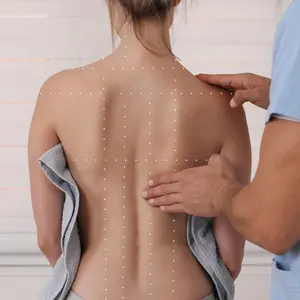

Integrative Health and Wellness

Integrative Health and Wellness
Positive Patient-Clinician Interaction May Enhance Pain Relief
The strength of the relationship between a patient and clinician may contribute to psychologically mediated pain relief, according to a new study published in Science Advances. The study, conducted by researchers at Massachusetts General Hospital and several cooperating institutions, used neuroimaging to identify the potential mechanism for the patient-client interaction effect on pain. The research builds on previous studies that have used brain scans to identify several brain regions involved in empathy and inferring the emotions of others.
For the study, 20 patients with chronic pain from fibromyalgia went through 12 trials in which moderately painful pressure was applied to the patient’s leg. Immediately after, a licensed acupuncturist either applied electroacupuncture treatment or no treatment. Each patient was paired with two practitioners—one who was merely introduced before the session and one who conducted an intake consultation to establish rapport. Brain activity was recorded for both patient and practitioner using functional magnetic resonance imaging (MRI). After each trial, both patient and practitioner rated pain and affect.
The brain scans show similar activation patterns in the patients and practitioners when pain stimulus was imminent, particularly in one region of the brain, the temporoparietal junction (TPJ). A stronger social connection was reported by both patient and clinician in sessions that occurred after a consultation than in sessions where only an introduction was made between patient and practitioner. Patients who reported stronger relationships with the practitioner reported stronger pain relief, and a stronger patient-clinician concordance in the TPJ region was also associated with stronger pain relief.
The study finds a promising link between the patient-clinician relationship and the behavior-brain circuitry linked to pain relief. However, the MRI scans limit some types of interactions that occur in real-life patient-clinician treatment sessions, so further research is needed.
REFERENCES
Ellingsen, D-M., Isenburg, K., Jung, C., et al. (2020, October 21). Dynamic brain-to-brain concordance and behavioral mirroring as a mechanism of the patient-clinician interaction. Science Advances, 6(43):eabc1304. https://www.nccih.nih.gov/research/research-results/new-research-identifies-a-potential-brain-behav…


 By
By







